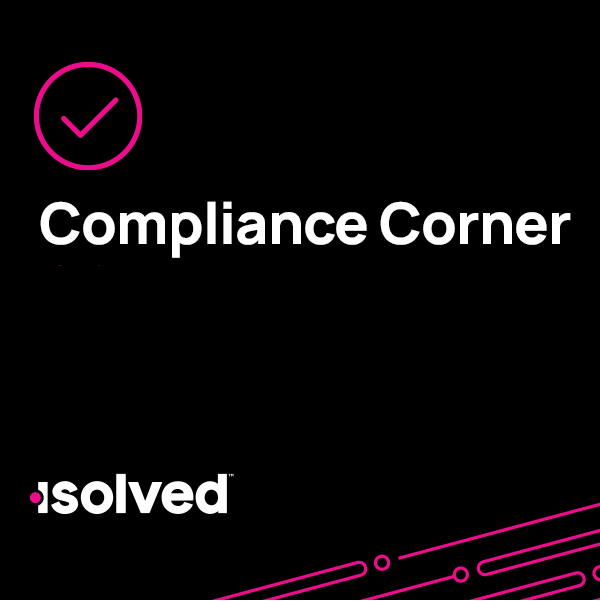Compliance Corner: Major Change in Salary Threshold for White Collar Overtime Exemptions
Tuesday November 19th, 2024
Estimated time to read: 3 minutes

Things move quickly in the world of HR compliance—especially lately. In a decision that will have an impact on nearly every business and organization, the U.S. District Court for the Eastern District of Texas vacated and set aside the U.S. Department of Labor (DOL)’s final regulation increasing the salary threshold for the “white collar” overtime exemption under the Fair Labor Standards Act (FLSA) on a nationwide basis on November 15th.
The court held that each of the three components of the rule exceeded the DOL’s statutory authority under the FLSA. Given the nationwide scope of the rule, it’s now struck down on a nationwide basis. The court had previously prohibited enforcement of the rule against the State of Texas in its capacity as an employer of state employees—its final decision now vacates the rule for all employers nationwide.
In this special Compliance Corner, we’ll cover the background behind the change, the court’s decision and what comes next for employers.
What was the original rule?
The FLSA generally requires an employer to pay an employee time-and-a-half (“overtime”) if the employee works more than 40 hours in a week. However, the law exempts some employees from that requirement, notably certain executive, administrative and professional (EAP) workers under the white-collar exemption. The DOL was moving to increase the salary threshold for the white-collar exemption.
To qualify for the white-collar exemption, an employee must generally satisfy a three-prong test: the employee must be paid on a salary basis, i.e., be paid a fixed and predetermined sum per week irrespective of the quantity or quality of the work performed (the “salary basis” test); the employee’s primary work must be the performance of exempt EAP duties (the “duties test”); and the employee must earn a minimum salary (the “salary threshold test”).
Did the threshold recently get raised?
In April of this year the DOL issued final regulations raising the white-collar exemption salary threshold (which, before the regulations, was last updated to $684 per week, or $35,558 per year, in 2019). The final rule raised the minimum salary in two steps. First, using the same methodology the DOL used in 2019, the rule raised the salary threshold to $844 per week ($43,888 annually). This increase became effective on July 1, 2024. In January 2025, the rule was scheduled to raise the salary threshold to $1,128 per week ($58,656 annually). That increase relied on a new, dramatically higher methodology and would have marked a 64.9% increase over the 2019 threshold.
The rule would have automatically updated the salary threshold every three years. The rule also increased the “highly compensated employee” (HCE) threshold from the current $107,432 annual salary to $132,964 as of July 1, 2024, and again to $151,164 as of January 1, 2025, again with automatic updates every three years.
How did the court decide?
In a 62-page decision, the court held with respect to both the July 1, 2024, and January 1, 2025, increases that by setting the salary threshold as high as it did, the DOL created a de facto “salary only” test for the EAP exemption. The court held this was more than the Department’s authority scope under the statute.
The court likewise found that given that the text of the FLSA expressly requires that increases to the salary threshold must be made via regulations in accordance with the Administrative Procedure Act. This means that the DOL lacked the authority to automatically trigger future increases. Finally, the court found that given the nationwide effect of the rule on hundreds of thousands of employers and millions of employees, striking down the rule on a nationwide basis was warranted.
What comes next?
It is clear now that the January 1, 2025, increase will not go into effect as scheduled, and the July 1, 2024, increase is nullified. Employers that previously adjusted the salaries or exemption status of employees who earned less than the salary threshold set by the now-invalidated July 1 increase are advised to consult with counsel before considering whether to rescind those changes on a going-forward basis. Employers should also remain aware that some states have salary thresholds that exceed the FLSA threshold, including Alaska, California, Colorado, Maine, New York and Washington.
It is critical that employers complete due diligence before making any hasty decisions on salaries that were increased earlier this year, or increases that may have already been communicated to employees to go into effect January 1, 2025 due exemption change. There are multiple factors employers must consider, including federal and state notification requirements when changing an employee’s pay amount (timing, reason, amount, etc.), as well as additional requirements and best practices if moving a previously exempt employee back to exempt, especially considering the impact on overall employee morale.
The DOL may seek to appeal the lower court’s decision to the Fifth Circuit Court of Appeals. That said, with the upcoming change in presidential administration, it’s possible this may change again or remain in the same ruling.
Do you need help keeping compliant amongst constantly shifting regulations? Get in touch with isolved HR Services to simplify compliance today!
This article has been read 2,783 times.
